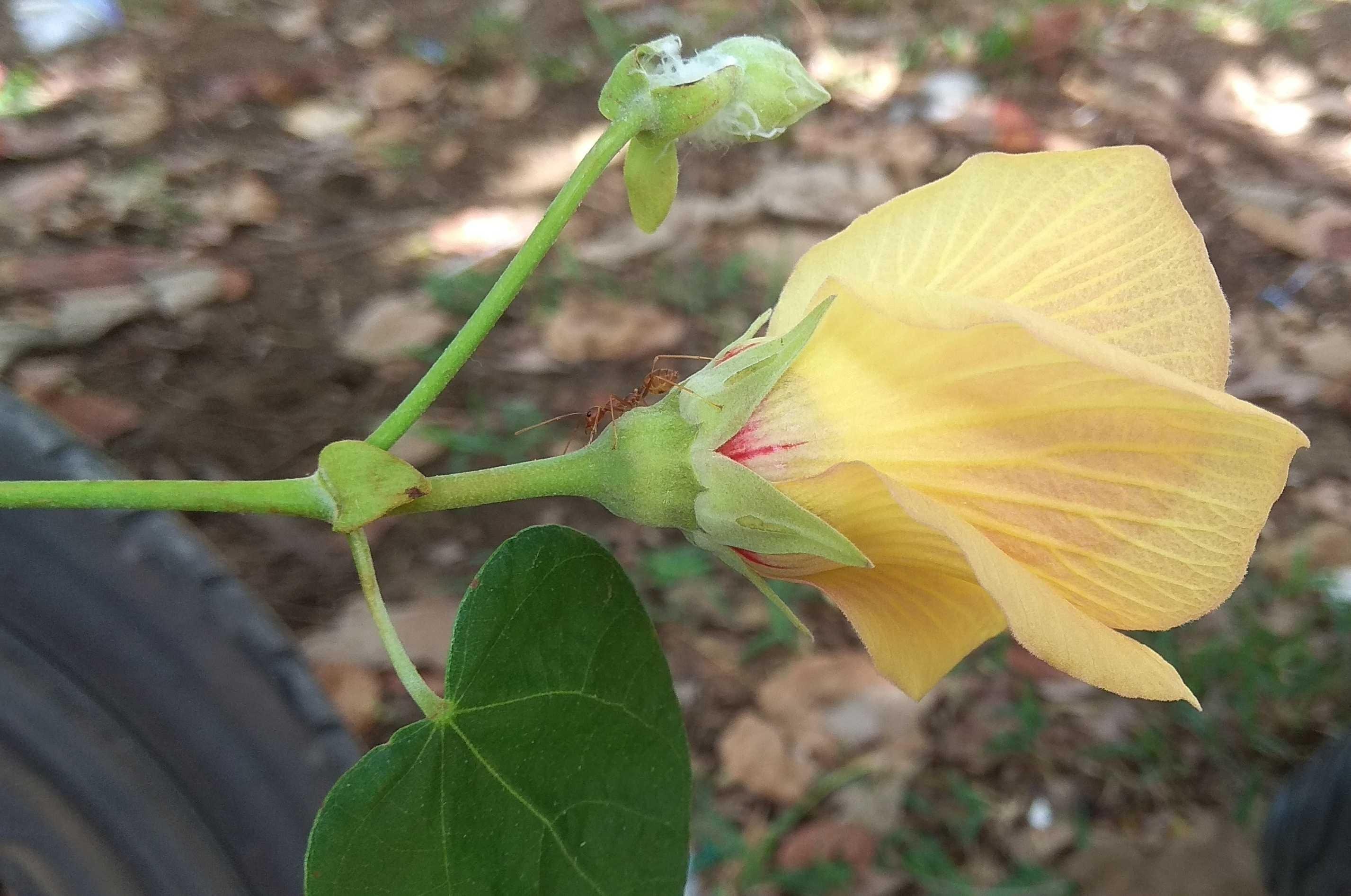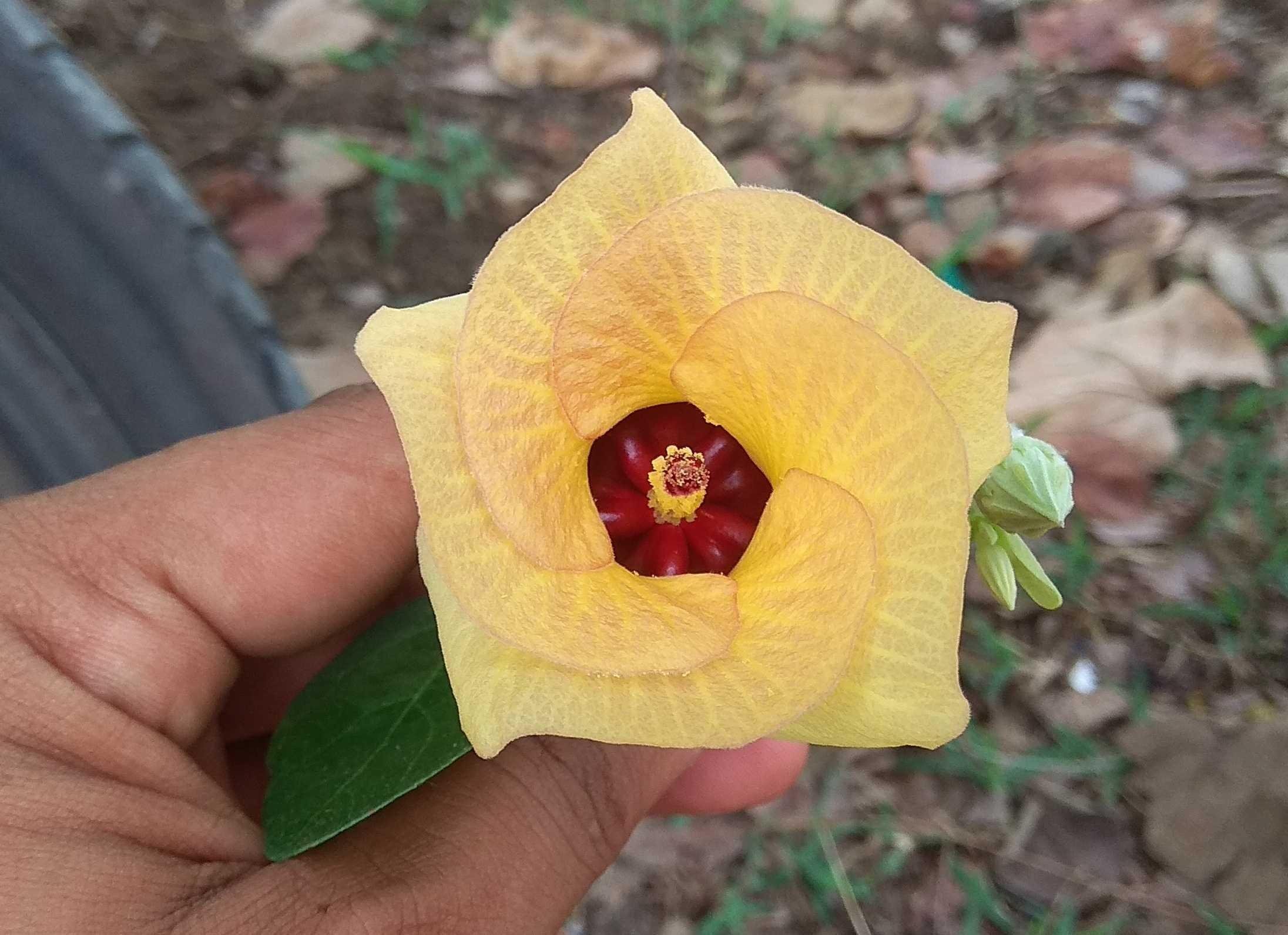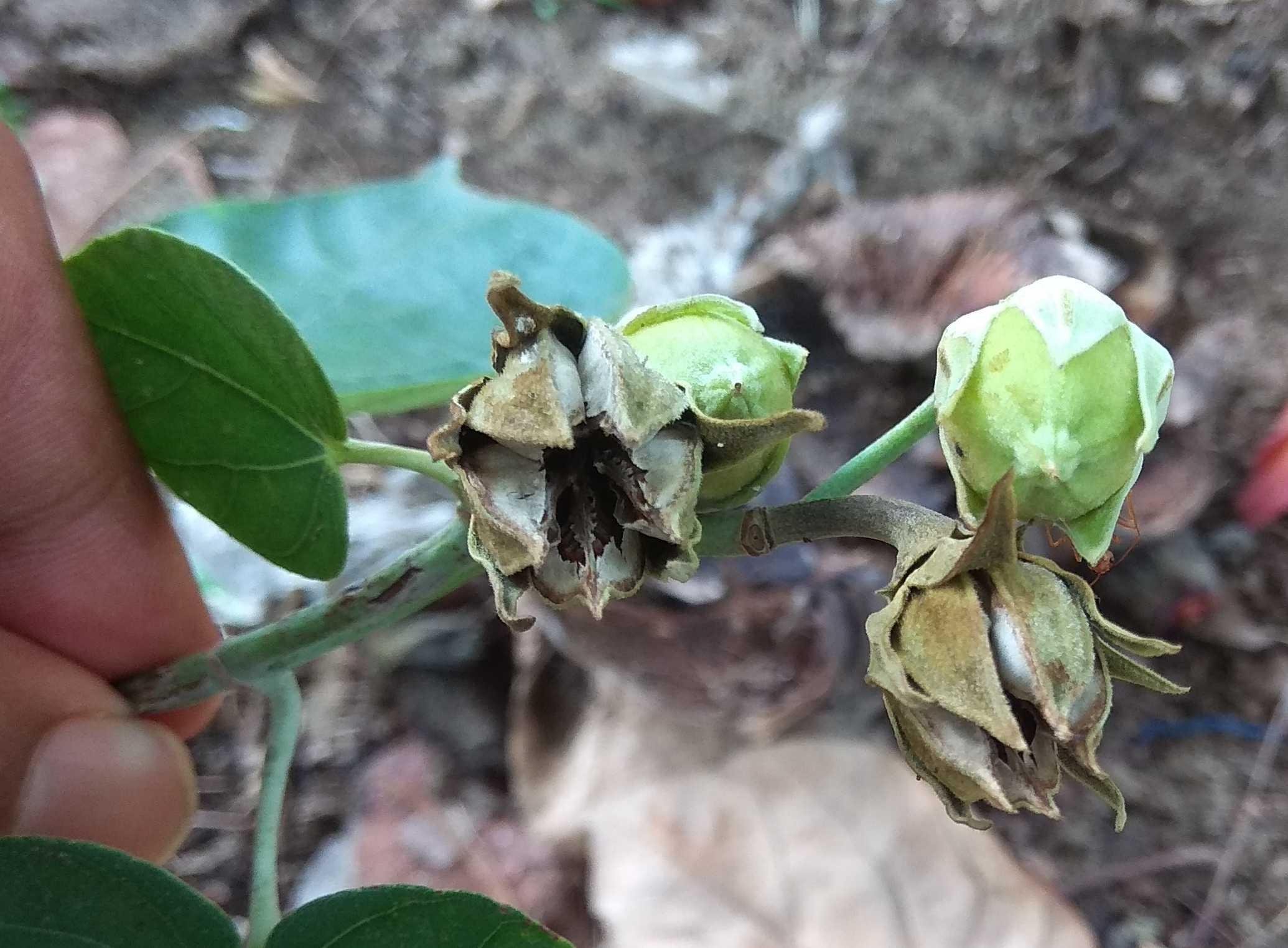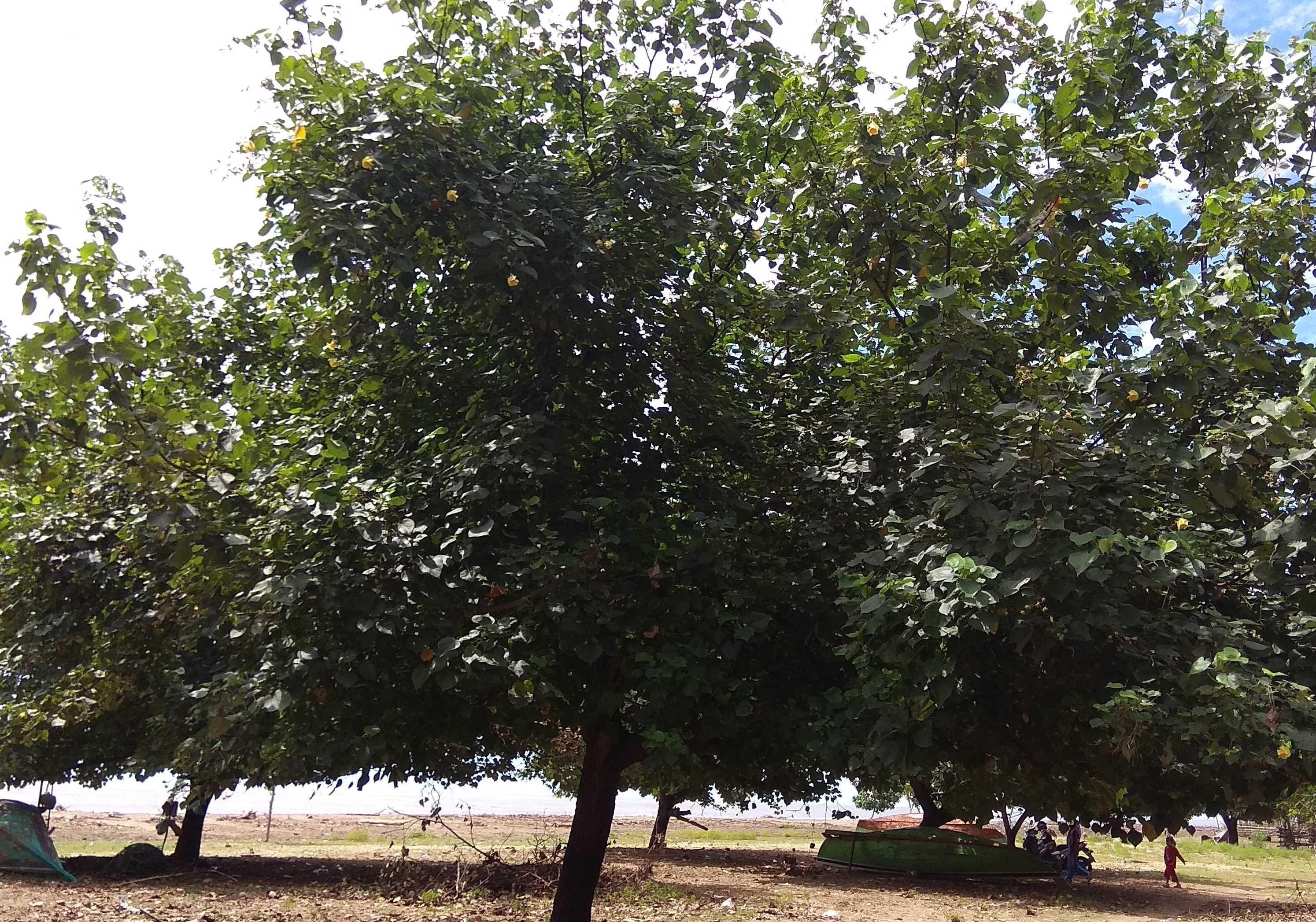
the Waru tree in the scientific language is also called Hibiscus tiliaceus, the cotton-cotton or Malvaceae, also known as the sea waru, and dadap sea has long been known as shade trees or river banks and bunds and beaches. Although the canopy is not too dense, waru is preferred because its roots are not deep so as not to damage the road and surrounding buildings. Waru can be reproduced with distek. However, the original plant is propagated by seed. Wearing cuttings for the development of waru is rather difficult, because the shoots will be easily cut off.
Waru is still as good as hibiscus. This plant is native to the tropics of the western Pacific but is now widespread throughout the Pacific region. waru have various types and have beautiful flowers yellow and orange, waru usually grow on the beach and other places that have a temperate climate.



waru has flowers with a fast withered, when the flowers waru has wilted the color of this flower turned into a bit red and falling from the branches of the tree. waru usually planted as a tree to shelter and the trunk also has various benefits such as wood carvings and wood carvings because the texture of wood is soft and sturdy so it is not easily broken when in the process of decoration carvings and flower decoration.

waru also has fruit that there are small seeds in it which then grow again become new waru. when the fruit has matured then the fruit of waru will mbelah themselves and the seeds are falling so that the new seeds and waru generation for the next period.

waru has a large tree and has branches and leaves are lush so that waru is the right kind of tree to shelter, other than that waru leaves can also be a goat feed because it has a thick leaf and green so it becomes a favorite leaf for livestock goat.

